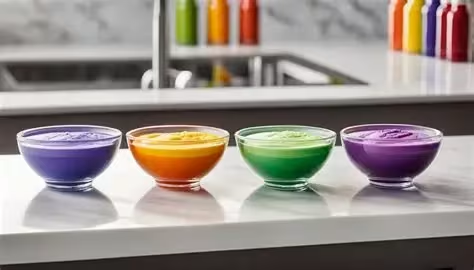The Problem with Artificial Food Dyes
For decades, artificial food dyes like Red 40, Yellow 5, and Blue 1 have brightened cereals, candies, sodas, and baked goods. But behind those vibrant colors lies a growing concern: research has linked some synthetic dyes to hyperactivity in children, allergic reactions, and potential carcinogenic effects. These dyes are derived from petroleum, and while approved in many countries, others like the European Union require warning labels or have banned some dyes altogether. As awareness spreads, consumers and manufacturers alike are turning to safer, natural alternatives.
The Rise of Plant-Based Colors
Plant-based food coloring offers a clean, chemical-free way to bring color to your food. These dyes are typically made from fruits, vegetables, flowers, and spices—like beets, carrots, turmeric, spirulina, and butterfly pea flower. Not only are they safer to ingest, but they often retain the added benefit of nutrients and antioxidants from their sources. Companies like Nestlé and Kraft have already started phasing out synthetic dyes in favor of natural ones, responding to consumer demand for transparency and health-conscious ingredients.
Creative Uses at Home
Home cooks and bakers can easily use plant-based coloring in everyday recipes without sacrificing vibrancy.
- Frosting & Cakes: Use beet juice for a rosy pink, spirulina powder for green, and butterfly pea tea for blue to purple hues depending on pH.
- Homemade Sodas: Add hibiscus syrup for a rich red or blueberry juice for a deep violet tone.
- Pasta & Rice: Color dough or grains with turmeric (yellow) or spinach puree (green) for fun, nutrient-boosted meals.
- Egg Dyeing or Icing Glaze: Natural colors from red cabbage, coffee, and paprika make festive options for holidays.
The Future Is Naturally Bright
As more studies highlight the potential dangers of artificial dyes, the food industry is quickly evolving. With plant-based options readily available, safe and beautiful meals are within reach—no petroleum required. Consumers can feel better about what’s on their plates while adding an extra splash of creativity to their cooking.



